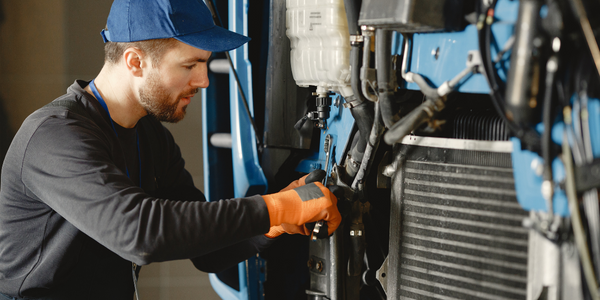Man-Made Stars: Evaluating Structural Integrity in High Performance Nuclear Fusion Machines for Power Generation

公司规模
Large Corporate
地区
- America
国家
- United States
产品
- COMSOL Multiphysics®
技术栈
- Numerical Simulation
实施规模
- Pilot projects
影响指标
- Innovation Output
- Digital Expertise
技术
- 分析与建模 - 数字孪生/模拟
- 分析与建模 - 预测分析
适用功能
- 产品研发
用例
- 预测性维护
服务
- 软件设计与工程服务
- 系统集成
关于客户
The MIT Plasma Science and Fusion Center (PSFC) is a leading research institution focused on advancing the science and technology of nuclear fusion. The center combines experimental research, cutting-edge theory, and numerical simulation to explore and develop fusion energy solutions. The PSFC's primary objective is to demonstrate the feasibility of hydrogen fusion as a clean, safe, and practically limitless source of energy. The center has been at the forefront of fusion research for over 50 years, with a particular focus on high magnetic field approaches to fusion. The PSFC's work involves collaboration with researchers, scientists, and engineers to identify and understand the key factors that can accelerate the availability of fusion energy.
挑战
The primary challenge faced by the MIT Plasma Science and Fusion Center (PSFC) researchers was to design a compact nuclear fusion machine, the Advanced Divertor eXperiment (ADX), capable of sustaining reactor-level heat fluxes and magnetic fields. The ADX needed to simulate the conditions of a full-scale fusion reactor while being a research and development testbed. The design had to withstand high temperatures, magnetic fields, and plasma disruptions, which are significant sources of stress. Plasma disruptions, particularly vertical displacement events (VDE), pose a severe threat as they generate large eddy currents and Lorentz forces that can cause substantial stress and displacement in the vacuum vessel. The researchers needed to ensure that the ADX could survive these conditions without structural failure.
解决方案
To address the challenge, the PSFC researchers employed numerical simulation using COMSOL Multiphysics® software to evaluate and optimize the design of the ADX. The proposed design featured a modular vacuum vessel composed of five separate axisymmetric shells, allowing for the testing of different divertor configurations. The divertor serves as the power exhaust system, removing fusion ashes from the tokamak. The modular design also enabled the swapping of magnetic coils to test various configurations. Numerical simulations were conducted to predict the magnetic fields, eddy currents, and Lorentz forces resulting from plasma disruptions. These simulations helped identify the stress and displacement in the vessel, guiding design modifications to reinforce the structure. The vessel components were made from Inconel 625, a strong nickel-based alloy with high resistance to current flow, minimizing eddy currents. The design criteria stipulated that the vessel walls should not experience stresses exceeding two-thirds of the yield stress value. Simulation results indicated that without modifications, the vessel would experience large stresses and displacements. To stabilize the vessel, a support block was added, significantly reducing stress and displacement, ensuring the vessel's ability to survive plasma disruptions.
运营影响
数量效益

Case Study missing?
Start adding your own!
Register with your work email and create a new case study profile for your business.
相关案例.

Case Study
Remote Monitoring & Predictive Maintenance App for a Solar Energy System
The maintenance & tracking of various modules was an overhead for the customer due to the huge labor costs involved. Being an advanced solar solutions provider, they wanted to ensure early detection of issues and provide the best-in-class customer experience. Hence they wanted to automate the whole process.

Case Study
Predictive Maintenance for Industrial Chillers
For global leaders in the industrial chiller manufacturing, reliability of the entire production process is of the utmost importance. Chillers are refrigeration systems that produce ice water to provide cooling for a process or industrial application. One of those leaders sought a way to respond to asset performance issues, even before they occur. The intelligence to guarantee maximum reliability of cooling devices is embedded (pre-alarming). A pre-alarming phase means that the cooling device still works, but symptoms may appear, telling manufacturers that a failure is likely to occur in the near future. Chillers who are not internet connected at that moment, provide little insight in this pre-alarming phase.

Case Study
Aircraft Predictive Maintenance and Workflow Optimization
First, aircraft manufacturer have trouble monitoring the health of aircraft systems with health prognostics and deliver predictive maintenance insights. Second, aircraft manufacturer wants a solution that can provide an in-context advisory and align job assignments to match technician experience and expertise.

Case Study
Integral Plant Maintenance
Mercedes-Benz and his partner GAZ chose Siemens to be its maintenance partner at a new engine plant in Yaroslavl, Russia. The new plant offers a capacity to manufacture diesel engines for the Russian market, for locally produced Sprinter Classic. In addition to engines for the local market, the Yaroslavl plant will also produce spare parts. Mercedes-Benz Russia and his partner needed a service partner in order to ensure the operation of these lines in a maintenance partnership arrangement. The challenges included coordinating the entire maintenance management operation, in particular inspections, corrective and predictive maintenance activities, and the optimizing spare parts management. Siemens developed a customized maintenance solution that includes all electronic and mechanical maintenance activities (Integral Plant Maintenance).

Case Study
Asset Management and Predictive Maintenance
The customer prides itself on excellent engineering and customer centric philosophy, allowing its customer’s minds to be at ease and not worry about machine failure. They can easily deliver the excellent maintenance services to their customers, but there are some processes that can be automated to deliver less downtime for the customer and more efficient maintenance schedules.







